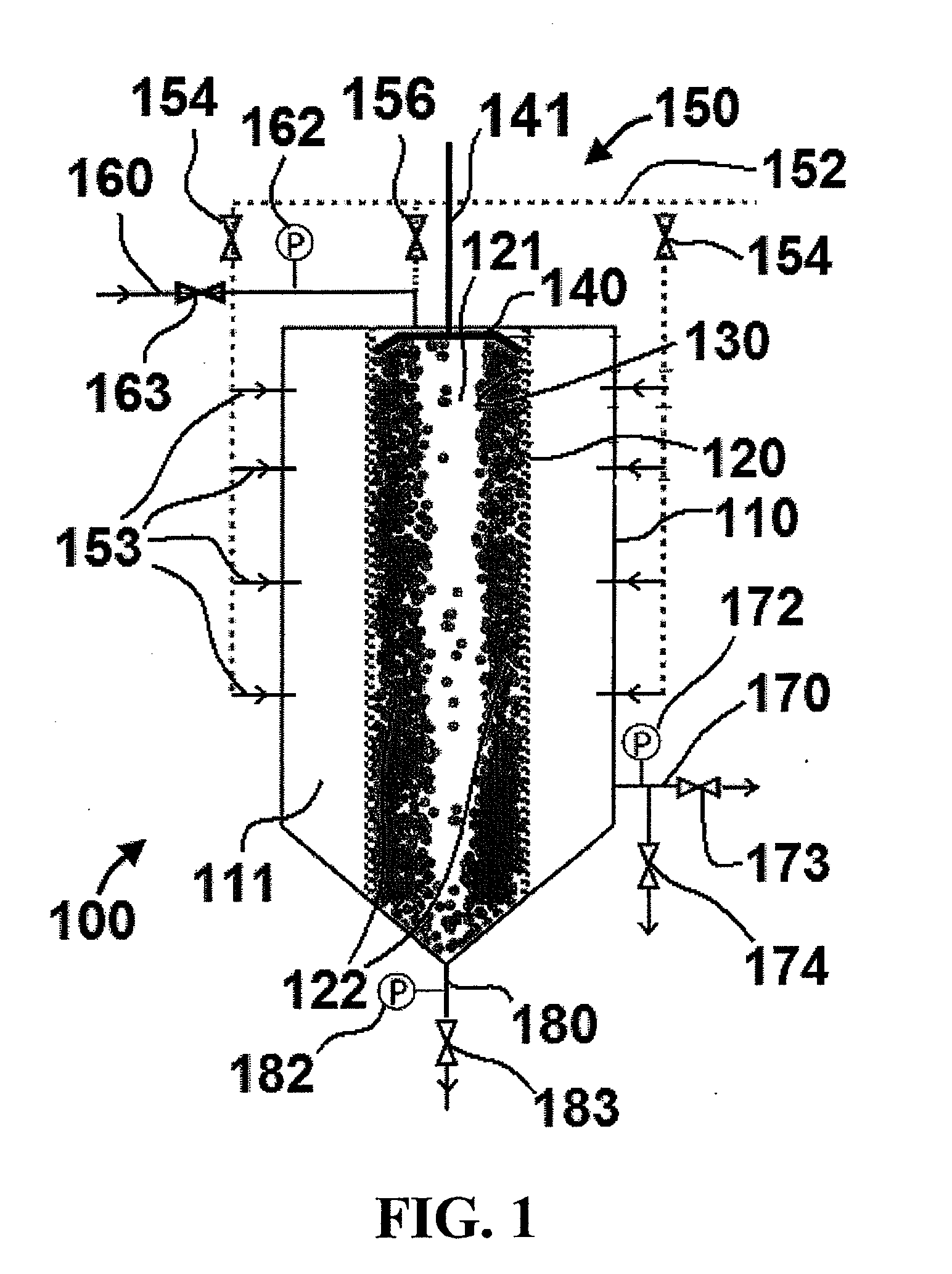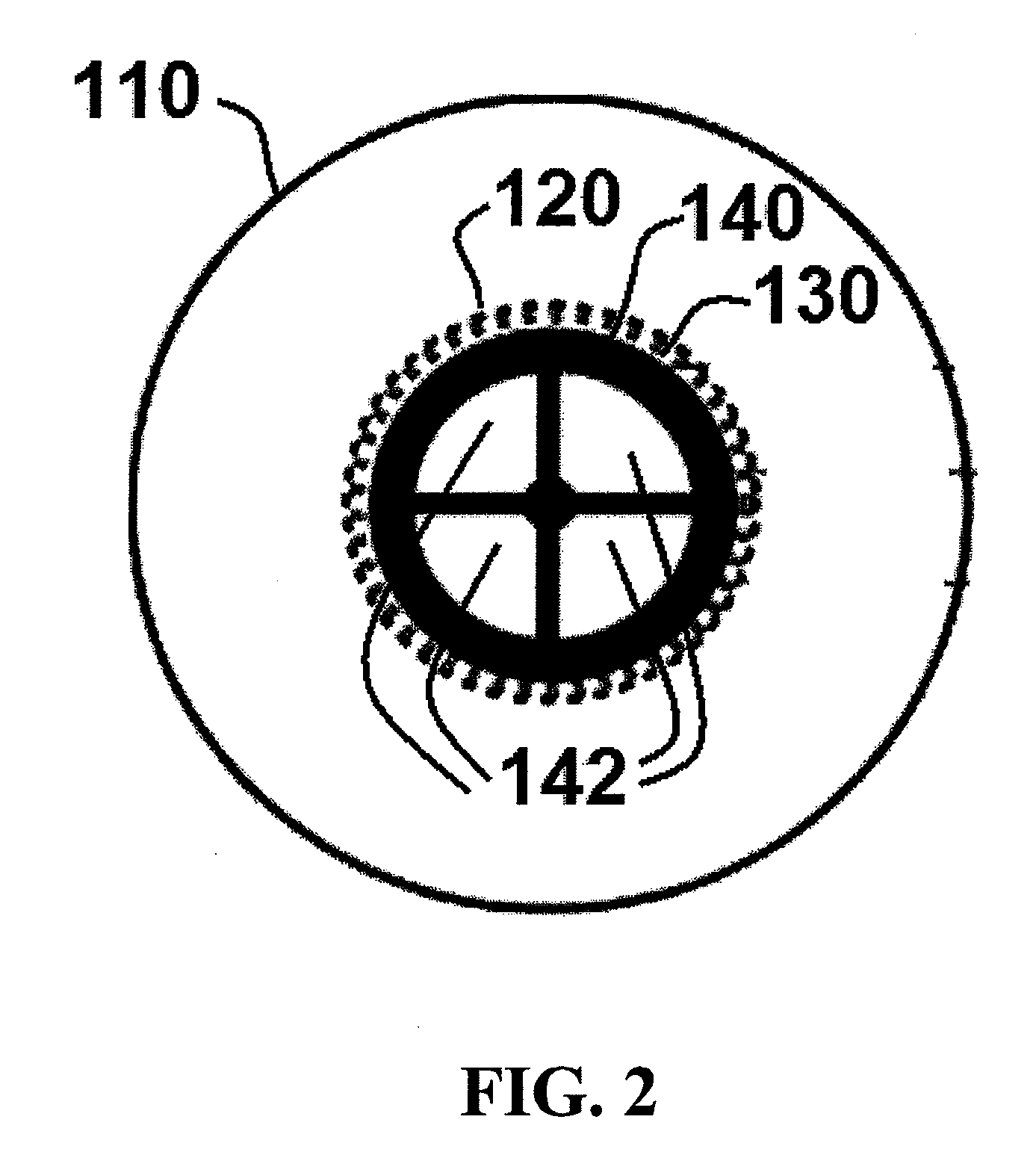Algae harvesting devices and methods
a technology of algae harvesting and fluid filtering, which is applied in the direction of moving filter element filtering, filtration separation, separation process, etc., can solve the problems of severe dilution of algae harvesting, no economic and suitable industrial approaches have been proven to be suitable for large-scale microalgae separation or removal, and the recovery of biomass can be significant problems, so as to achieve easy scraping or removal
- Summary
- Abstract
- Description
- Claims
- Application Information
AI Technical Summary
Benefits of technology
Problems solved by technology
Method used
Image
Examples
Embodiment Construction
[0027]FIG. 1 is a schematic view of an exemplary embodiment of a filtration system 100 comprising a filter housing 110, a filter support 120 and a filter material 130. In this embodiment, filter housing 110 is constructed from stainless steel or polyvinylchloride (PVC) and is approximately 0.45 meters in diameter. In the exemplary embodiment shown, filter support 120 comprises a stainless steel or PVC tubular meshes or screen approximately 0.2 meters in diameter, with a nominal pore size of 50 microns. In this embodiment, filter material 130 comprises a stainless screen , cellulose acetate (CA), polysulfone (PS), polyethylene (PE), polyethersulfone (PES), polyvinylidene difluoride (PVDF) or PVC membrane with a nominal pore size of less than 1 microns. In addition, filtration system 100 comprises a piston 140 extending into one end of filter material 130. As explained in more detail below, piston 140 may be used to remove filtered material from filter material 130.
[0028]Filtration sy...
PUM
| Property | Measurement | Unit |
|---|---|---|
| pore size | aaaaa | aaaaa |
| size | aaaaa | aaaaa |
| concentration | aaaaa | aaaaa |
Abstract
Description
Claims
Application Information
 Login to View More
Login to View More - R&D
- Intellectual Property
- Life Sciences
- Materials
- Tech Scout
- Unparalleled Data Quality
- Higher Quality Content
- 60% Fewer Hallucinations
Browse by: Latest US Patents, China's latest patents, Technical Efficacy Thesaurus, Application Domain, Technology Topic, Popular Technical Reports.
© 2025 PatSnap. All rights reserved.Legal|Privacy policy|Modern Slavery Act Transparency Statement|Sitemap|About US| Contact US: help@patsnap.com



